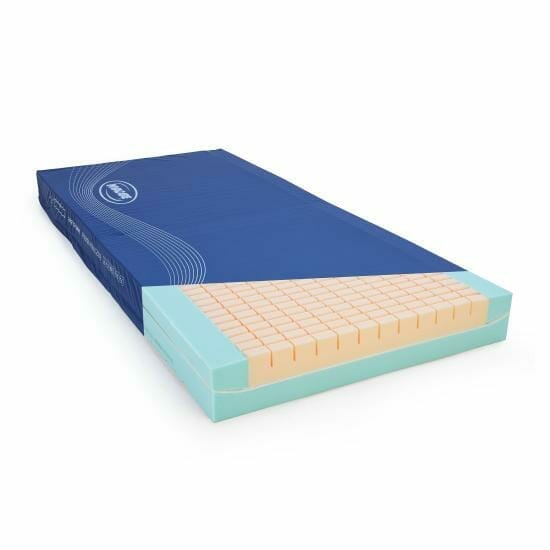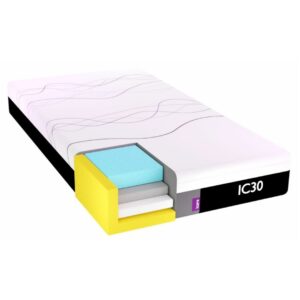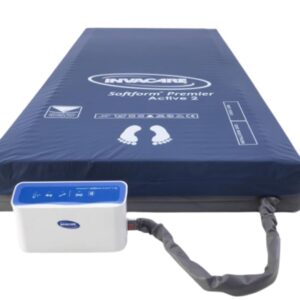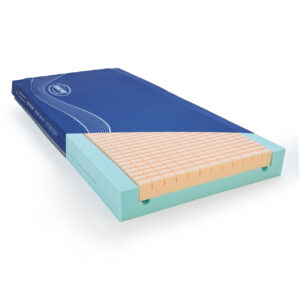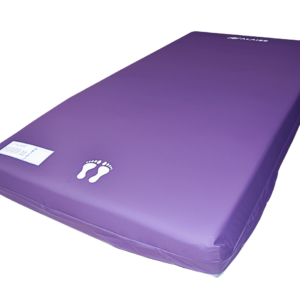Description
The Softform Maxi Glide Mattress features a unique ‘Glide’ design that enables the mattress to conform to electric profiling beds. This design ensures that the top surface supporting the individual remains in place during bed adjustments, minimising shear and friction forces that can contribute to pressure injuries.
The castellated foam insert supports airflow and adapts to body shape, while a U-core base reinforces sidewalls for transfer stability.
Its multi-stretch cover is waterproof, vapour-permeable and reduces shear. The toughened polyurethane-coated base, welded seams and waterfall flap support infection control and product longevity.
Who it’s for
- For clients at medium risk of pressure injury needing shear protection during bed adjustments.
- For therapists wanting a static mattress that offers high-level pressure redistribution in profiling beds.
Key features
- Glide design – reduces shear by maintaining top layer position during bed movement
- Castellated foam insert – adapts to body contours and improves airflow
- Single piece U-core – enhances sidewall support for safe transfers
- Multi-stretch cover – waterproof, breathable and skin-friendly
- Tough polyurethane-coated base – durable and protective
- Welded seams and zip flap – reduce infection risk and fluid ingress

